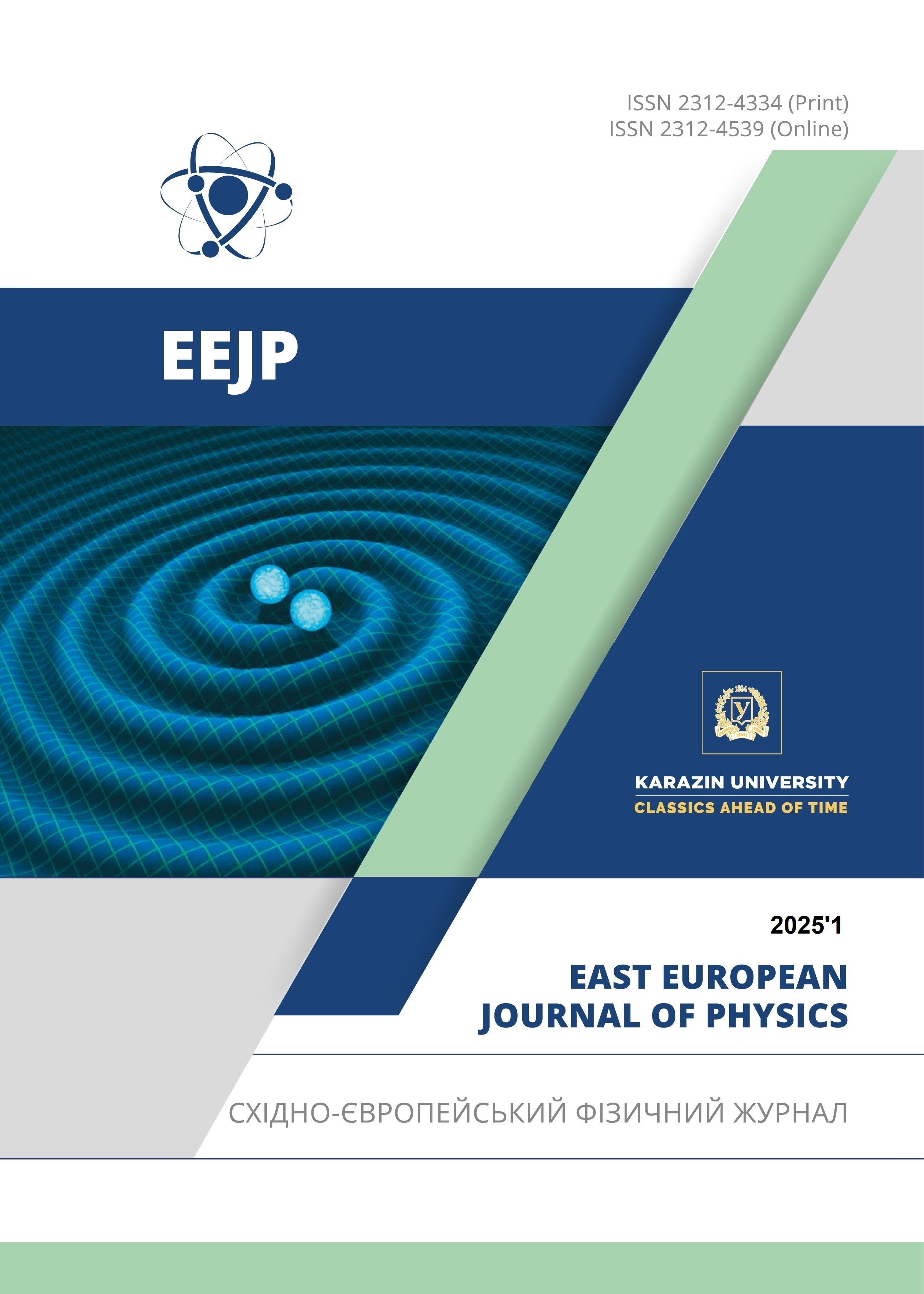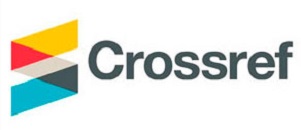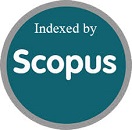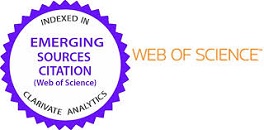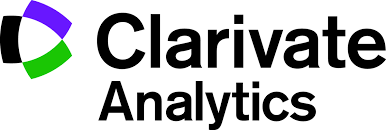Casson Flow of Blood Containing Au and Ta Nanoparticles Over a Stenotic Artery
Abstract
Computational fluid dynamics focuses a premium on investigations of blood flow via narrowed arteries due to the relevance of these issues to biological investigations. The main goal of this study is to find out how nanoparticles affect blood flow via a constricted artery. As part of our investigation into the theoretical flow scenario, we examine the significance of Casson nanofluid movement via a cardiac artery. By using the suitable delf similarity variables the PDEs transformed into ODEs. Following that, the dimensionless equations are handled employing the MATLAB computer program in the Bvp5c method. The magnetic properties of the blood flow cells were investigated by increasing the magnetic field parameter, which resulted in a reduction in blood flow as predicted. The movement trend reduced when the Casson liquid parameter increased. To improve the transmission of heat efficiency, the concentration of gold particles in the constricted artery should be increased. One may argue that iron nanoparticles are useful for delivering medications. Presently available methods may be useful for distributing drugs throughout the circulatory system. The theoretical consequences of this medication delivery method are presented in a manner that is made easier by the utilization of an illustration representation
Downloads
References
L. Sarwar, A. Hussain, U. Fernandez-Gamiz, S. Akbar, A. Rehman, and E.S.M. Sherif, “Thermal enhancement and numerical solution of blood nanofluid flow through stenotic artery,” Sci. Rep. 12(1), 1–11 (2022). https://doi.org/10.1038/s41598-022-20267-8
I. Shahzadi, and S. Bilal, “A significant role of permeability on blood flow for hybrid nanofluid through bifurcated stenosed artery: Drug delivery application,” Comput. Methods Programs Biomed. 187, 105248 (2020). https://doi.org/10.1016/j.cmpb.2019.105248
S.U.S. Choi, and J.A. Eastman, "Enhancing Thermal Conductivity of Fluid with Nanoparticles," in: 1995 International mechanical engineering congress and exhibition, (San Francisco, CA, USA, 1995), 231, 99-105 (1995).
S.R.R. Reddy, G. Ramasekhar, S. Suneetha, and S. Jakeer, “Entropy Generation Analysis on MHD Ag+Cu/Blood Tangent Hyperbolic Hybrid Nanofluid Flow Over a Porous Plate,” J. Comput. Biophys. Chem. 22(7), 881–895 (2023). https://doi.org/10.1142/S2737416523500473
M. Alhadri, et al., “Response surface methodology (RSM) and artificial neural network (ANN) simulations for thermal flow hybrid nanofluid flow with Darcy-Forchheimer effects,” J. Indian Chem. Soc. 99(8), 100607 (2022). https://doi.org/10.1016/j.jics.2022.100607
R. Tiwari, and M.K. Das, “Heat transfer augmentation in a two-sided lid-driven differentially heated square cavity utilizing nanofluids,” International Journal of Heat and Mass Transfer, 50(9-10), 2002-2018 (2007). https://doi.org/10.1016/j.ijheatmasstransfer.2006.09.034
G. Ramasekhar, “Scrutinization of BVP Midrich Method for Heat Transfer Analysis on Various Geometries in the,” 13(1), 100–107 (2024). https://doi.org/10.1166/jon.2024.2130
G. Ramasekhar, and P.B.A. Reddy, “Entropy generation on Darcy–Forchheimer flow of Copper-Aluminium oxide/Water hybrid nanofluid over a rotating disk: Semi-analytical and numerical approaches,” Sci. Iran. 30(6), 2245–2259 (2023). https://doi.org/10.24200/sci.2023.60134.6617
M.J. Mitchell, M.M. Billingsley, R.M. Haley, M.E. Wechsler, N.A. Peppas, and R. Langer, “Engineering precision nanoparticles for drug delivery,” Nat. Rev. Drug Discov. 20(2), 101–124 (2021). https://doi.org/10.1038/s41573-020-0090-8
A.M. Wagner, M.P. Gran, and N.A. Peppas, “Designing the new generation of intelligent biocompatible carriers for protein and peptide delivery,” Acta Pharm. Sin. B, 8(2), 147-164 (2018). https://doi.org/10.1016/j.apsb.2018.01.013
G. Ramasekhar, and M. Jawad, “Characteristics of MWCNT, SWCNT, Cu and water based on magnetized flow of nanofluid with Soret and Dufour effects induced by moving wedge: Consequence of Falkner–Skan power law," Numerical Heat Transfer, Part A: Applications, 1–15 (2024). https://doi.org/10.1080/10407782.2024.2341270
E. Blanco, H. Shen, and M Ferrari, “Principles of nanoparticle design for overcoming biological barriers to drug delivery,” Nature Biotechnol. 33, 941–951 (2015). https://doi.org/10.1038/nbt.3330
L. Kou, Y.D. Bhutia, Q. Yao, Z. He, J. Sun, and V. Ganapathy, “Transporter-guided delivery of nanoparticles to improve drug permeation across cellular barriers and drug exposure to selective cell types,” Front. Pharmacol. 9, (2018). https://doi.org/10.3389/FPHAR.2018.00027/FULL
G. Ramasekhar, J. Shaik, S.R.R. Reddy, A. Divya, M. Jawad, and B.A.A. Yousif, “Numerical investigation of Casson fluid flow performance of blood containing gold and Fe3O4 nanofluid injected into a stenotic artery,” Numer. Heat Transf. Part A Appl. 1–17 (2024). https://doi.org/10.1080/10407782.2024.2372465
H. Waqas, U. Farooq, D. Liu, M. Alghamdi, S. Noreen, and T. Muhammad, “Numerical investigation of nanofluid flow with gold and silver nanoparticles injected inside a stenotic artery,” Materials & Design, 223, 111130 (2022). https://doi.org/10.1016/j.matdes.2022.111130
T. Sajid, et al., “Magnetized Cross tetra hybrid nanofluid passed a stenosed artery with nonuniform heat source (sink) and thermal radiation: Novel tetra hybrid Tiwari and Das nanofluid model,” J. Magn. Magn. Mater. 569, (2023). https://doi.org/10.1016/j.jmmm.2023.170443
S.Z.H. Shah, A. Ayub, U. Khan, A. Darvesh, E.-S.M. Sherif, and I. Pop, “Thermal transport exploration of ternary hybrid nanofluid flow in a non-Newtonian model with homogeneous-heterogeneous chemical reactions induced by vertical cylinder,” Adv. Mech. Eng. 16(5), 1–14 (2024). https://doi.org/10.1177/16878132241252229
G. Ramasekhar, S. Jakeer, S. Reddy, R. Reddy, and S. Alkarni, “Biomedical importance of Casson nanofluid flow with silver and Fe 2 O 3 nanoparticles delivered into a stenotic artery : Numerical study,” 9, 23142–23157 (2024). https://doi.org/10.3934/math.20241125
E.A. Algehyne, et al., “Entropy optimization and response surface methodology of blood hybrid nanofluid flow through composite stenosis artery with magnetized nanoparticles (Au-Ta) for drug delivery application,” Sci. Rep. 13(1), 1–21 (2023). https://doi.org/10.1038/s41598-023-36931-6
H. Waqas, U. Farooq, D. Liu, M. Alghamdi, S. Noreen, and T. Muhammad, “Numerical investigation of nanofluid flow with gold and silver nanoparticles injected inside a stenotic artery,” Materials & Design, 223, 111130 (2022). https://doi.org/10.1016/j.matdes.2022.111130
L. Sarwar, and A. Hussain, "Flow characteristics of Au-blood nanofluid in stenotic artery," International Communications in Heat and Mass Transfer, 127, 105486 (2021). https://doi.org/10.1016/j.icheatmasstransfer.2021.105486
S. Basma, et al. "Heat transfer attributes of gold–silver–blood hybrid nanomaterial flow in an EMHD peristaltic channel with activation energy," Nanomaterials, 12(10), 1615 (2022). https://doi.org/10.3390/nano12101615
H.T.Basha, K. Rajagopal, N.A. Ahammad, S. Sathish, and S.R. Gunakala, "Finite Difference Computation of Au‐Cu/Magneto‐Bio‐Hybrid Nanofluid Flow in an Inclined Uneven Stenosis Artery," Complexity, 2022(1), 2078372 (2022). https://doi.org/10.1155/2022/2078372
H. Waqas, U. Farooq, A. Hassan, D. Liu, S. Noreen, R. Makki, M.Imran, and M.R. Ali, “Numerical and Computational simulation of blood flow on hybrid nanofluid with heat transfer through a stenotic artery: Silver and gold nanoparticles,” Results in Physics, 44, 106152 (2023). https://doi.org/10.1016/j.rinp.2022.106152
I. Shahzadi, and S. Bilal, “A significant role of permeability on blood flow for hybrid nanofluid through bifurcated stenosed artery: Drug delivery application,” Computer Methods and Programs in Biomedicine, 187, 105248 (2020). https://doi.org/10.1016/j.cmpb.2019.105248
Copyright (c) 2025 Sangapatnam Suneetha

This work is licensed under a Creative Commons Attribution 4.0 International License.
Authors who publish with this journal agree to the following terms:
- Authors retain copyright and grant the journal right of first publication with the work simultaneously licensed under a Creative Commons Attribution License that allows others to share the work with an acknowledgment of the work's authorship and initial publication in this journal.
- Authors are able to enter into separate, additional contractual arrangements for the non-exclusive distribution of the journal's published version of the work (e.g., post it to an institutional repository or publish it in a book), with an acknowledgment of its initial publication in this journal.
- Authors are permitted and encouraged to post their work online (e.g., in institutional repositories or on their website) prior to and during the submission process, as it can lead to productive exchanges, as well as earlier and greater citation of published work (See The Effect of Open Access).
